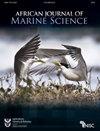在生态系统评价和空间规划中应用的精细尺度拖网成果制图
IF 1.4
4区 生物学
Q3 MARINE & FRESHWATER BIOLOGY
引用次数: 0
摘要
摘要精细比例尺渔业活动图是渔业管理、生物多样性影响评估和海洋空间规划的重要信息层。我们的目标是绘制南非海底拖网捕捞强度的准确地图,并展示其在全国范围内的效用。我们计算了一个被扫面积比,代表了整个研究期间(2005-2018年)和每年的海底拖网捕捞量。然后,我们绘制了拖网捕捞活动的时空格局,确定了核心捕捞区,并检查了拖网捕捞、南非海洋生态系统类型和国家海洋保护区网络之间的空间重叠。拖网捕捞努力的高比例(90%)集中在43%的拖网捕捞区域,其余10%分布在57%的捕捞区域。该渔场与150种底栖和底底-中上层海洋生态系统类型中的33种重叠。其中,11个在拖网围栏内的面积超过50%,5个超过80%。我们的分析支持对生态系统类型进行系统的优先排序,以进一步进行管理和保护。新的南非拖网捕捞强度图有助于改善生态系统评估的压力层,有助于确定优先捕鱼区,并适用于养护、海洋空间规划和渔业管理。关键词:底栖生态系统生态认证捕捞活动南非空间优先扫掠面积比拖网捕捞强度本文章由计算机程序翻译,如有差异,请以英文原文为准。
Mapping fine-scale demersal trawl effort for application in ecosystem assessment and spatial planning
AbstractFine-scale maps of fishing activity are valuable information layers for fisheries management, assessments of biodiversity impacts and marine spatial planning. Our aim was to develop an accurate map of demersal trawling intensity in South Africa and to demonstrate its utility at a national scale. We calculated a swept area ratio, representing demersal trawling effort for the entire study period (2005‒2018) and annually. We then plotted spatial and temporal patterns of trawling activity, identified core fishing areas, and examined spatial overlap between trawling, South Africa’s marine ecosystem types and the national network of marine protected areas. A high proportion of trawling effort (90%) was concentrated in 43% of the area exposed to trawling, with the remaining 10% spread across 57% of the fished areas. The fishery overlaps with 33 of 150 benthic and bentho-pelagic marine ecosystem types. Of those, 11 have more than 50% of their extent, and five have more than 80%, within the trawl ring-fence. Our analyses support a systematic prioritisation of ecosystem types for further management and protection. The new South African trawling-intensity map contributes an improved pressure layer for ecosystem assessments, can help identify priority fishing areas and has application in conservation, marine spatial planning and fisheries management.Keywords: benthic ecosystemseco-certificationfishing activitySouth Africaspatial prioritisationswept area ratiotrawling intensity
求助全文
通过发布文献求助,成功后即可免费获取论文全文。
去求助
来源期刊

African Journal of Marine Science
生物-海洋与淡水生物学
CiteScore
2.60
自引率
16.70%
发文量
17
审稿时长
6-12 weeks
期刊介绍:
The African (formerly South African) Journal of Marine Science provides an international forum for the publication of original scientific contributions or critical reviews, involving oceanic, shelf or estuarine waters, inclusive of oceanography, studies of organisms and their habitats, and aquaculture. Papers on the conservation and management of living resources, relevant social science and governance, or new techniques, are all welcomed, as are those that integrate different disciplines. Priority will be given to rigorous, question-driven research, rather than descriptive research. Contributions from African waters, including the Southern Ocean, are particularly encouraged, although not to the exclusion of those from elsewhere that have relevance to the African context. Submissions may take the form of a paper or a short communication. The journal aims to achieve a balanced representation of subject areas but also publishes proceedings of symposia in dedicated issues, as well as guest-edited suites on thematic topics in regular issues.
 求助内容:
求助内容: 应助结果提醒方式:
应助结果提醒方式:


